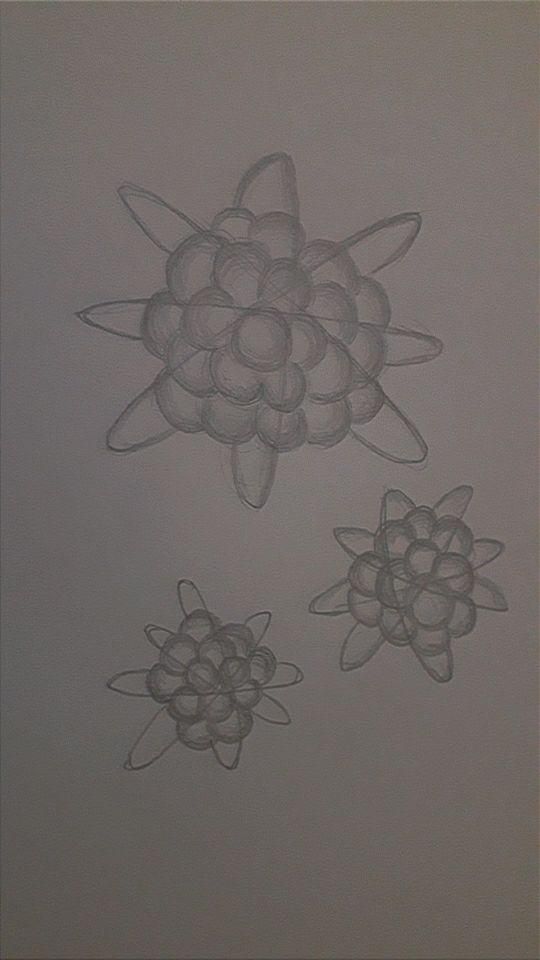Nuclear Fission

It began in 1789 when a German chemist named Martin Klaproth discovered uranium, but it was not until 1934 that nuclear fission was first achieved following a series of experiments by Enrico Fermi, an Italian physicist. The discovery opened the door to research by scientists around the world, and in 1942 the first nuclear reactor was successfully tested at the University of Chicago. The Atomic Energy Commission was created in 1946 and approved the construction of the experimental breeder reactor I in Idaho. The reactor generated the first electricity from nuclear energy on 20 December 1951. On 28 March 1979, a reactor was damaged at Three Mile Island nuclear power station near Harrisburg, Pennsylvania, and radiation leaked from water that spilt out of the primary cooling system. Less than a decade later, however, a disaster struck Ukraine at Chernobyl power station. In the early hours of 26 April 1986, one of four nuclear reactors exploded. EDF’s decision to press ahead with the £18bn Hinkley Point C project means Britain will get its first new nuclear power station in a generation. It took a decade of debate to reach this point.
Has anyone heard of the terms nuclear fission? Well I honestly hadn't, I only heard that there were nuclear bombs. It was a surprising task to research something I didn't know.

I had no clue about this at first but now I know a lot more about it.
It began in 1789 when a German chemist named Martin Klaproth discovered uranium but it was not until 1934 that nuclear fission was first achieved following a series of experiments by Enrico Fermi, an Italian physicist.
The discovery opened the door to research by scientists around the world and in 1942 the first nuclear reactor was successfully tested at the University of Chicago.
Most early atomic research was focused on developing weapons for the Second World War under the code name Manhattan Project. On 6 August 1945, an American B-29 bomber dropped the world’s first deployed atomic bomb over the Japanese city of Hiroshima. The bomb immediately killed about 80,000 people, and tens of thousands would later die of radiation exposure.
After the war, the US government backed the development of nuclear energy for civilian purposes.
The Atomic Energy Commission was created in 1946 and approved the construction of an experimental breeder reactor I in Idaho. The reactor generated the first electricity from nuclear energy on 20 December 1951.
The UK’s first nuclear reactor was built in 1947 at the Atomic Energy Research Establishment in Harwell to demonstrate the viability of commercial reactors. In 1954 Britain established its own atomic energy authority, to carry out nuclear research, develop nuclear deterrents and reactor technologies.
The UK’s first commercial reactor, Calder Hall in Cumberland, was opened by the Queen in 1956 and the UK government claimed it was “the first station anywhere in the world to produce electricity from atomic energy on a full industrial scale”.
But since then a number of nuclear disasters around the world have blighted the industry. On 28 March 1979, a reactor was damaged at a nuclear power station near Harrisburg, Pennsylvania, and radiation leaked from water that spilt out of the primary cooling system. The accident was caused by a combination of mechanical failure and human error. It triggered fear and confusion, but no one was hurt.
Less than a decade later, however, a disaster struck Ukraine at the Chernobyl power station. In the early hours of 26 April, 1986 one of four nuclear reactors exploded. The fallout forced tens of thousands from their homes, and many were killed at the time and in subsequent years by radiation.
It was the only event classed as a ‘major accident’ by the International Atomic Energy Agency until the nuclear disaster in Fukushima, Japan, in March 2011. A powerful struck Japan’s northeast coast and triggered a triple meltdown at the nuclear power plant. Almost 19,000 people died in the tsunami, while 160,000 people fled radiation in Fukushima. Afterwards, Germany decided to end all nuclear power generation. In the 32 years before Chernobyl, 409 reactors were opened, but only 194 have been connected in the three decades since.
EDF’s decision to press ahead with the £18bn Hinkley Point C project means Britain will get its first new nuclear power station in a generation. It took a decade of debate to reach this point, and will be another decade before the project on the Somerset coast is complete.
References
https://www.aps.org/publications/apsnews/200712/physicshistory.cfm
https://www.theguardian.com/environment/2016/jul/28/a-short-history-of-nuclearfission#:~:text=It%20began%20in%201789%20when,Enrico%20Fermi%2C%20an%20Italian%20physicist.&text=The%20reactor%20generated%20the%20first,energy%20on%2020%20December%201951.
https://www.britannica.com/science/nuclear-fission
https://www.atomicarchive.com/science/fission/index.html
Author biography
Aishath Alma, a 13-year-old from Malé Maldives, is a student from seventh grade who is currently studying at Jamaluddin School. She is now a member of the prestigious Leaders of Tomorrow programme run by Professor Ugail. She likes musical instruments (listening to music as well!), photography, reading books, being organized, and anything that's related to arts. She is very fond of "sports", not just one but all kinds of sports. Her current goal is to one day beat the women's 400 meters sprint world record, and her dream is to become a successful businesswoman.

Cite this article as:
Aishath Alma, Nuclear Fission, theCircle Composition, Volume 2, (2022). https://thecirclecomposition.org/nuclear-fission/
